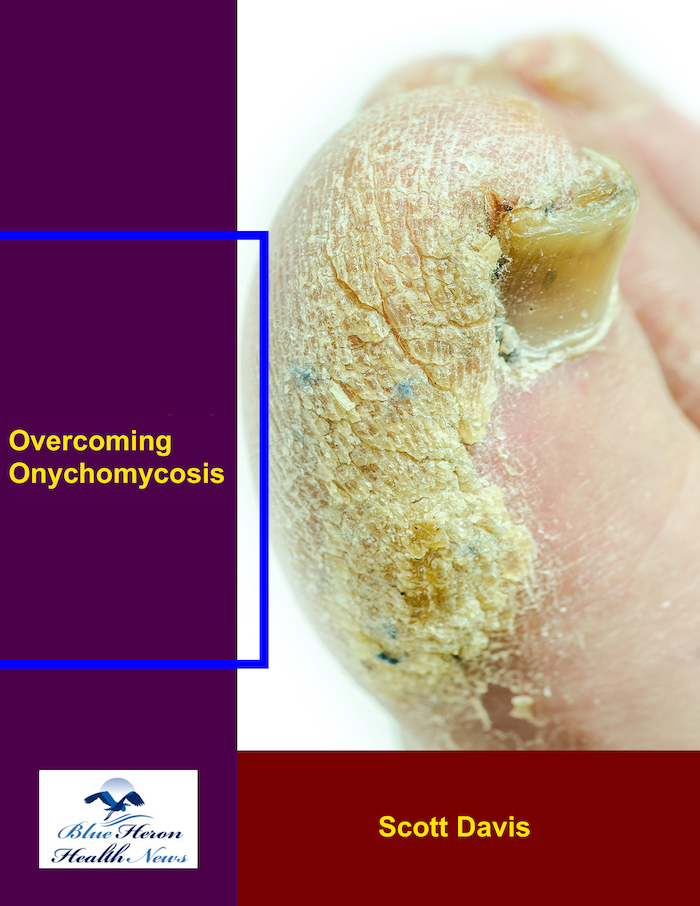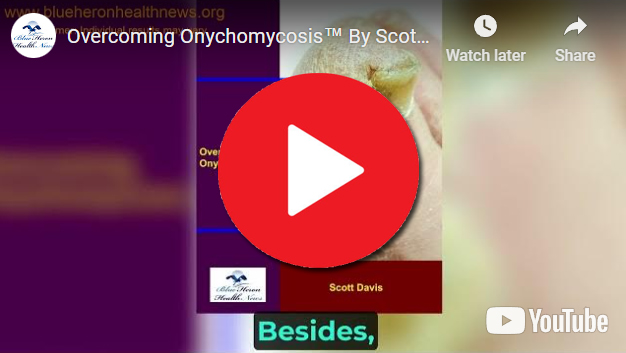
Overcoming Onychomycosis™ By Scott Davis It is a simple, natural, and all-in-one solution for onychomycosis. The program can help you to treat your nail fungus naturally. Once you follow this program, you do not need to spend on expensive treatments to prevent a recurrence. In brief, you can have a proven solution for your chronic nail fungus. Besides, the program is easy to follow, and most users find it effective against onychomycosis.
What are the signs of nail damage that could lead to onychomycosis?
Nail damage can create the ideal conditions for onychomycosis (fungal nail infection) to develop. Fungal infections often occur when the nail is weakened, injured, or compromised, allowing fungi to enter and infect the nail bed. Here are the signs of nail damage that could potentially lead to onychomycosis:
1. Discoloration
- Yellowing or Whitish Appearance: If your nails start to turn yellow, white, or even brown, it may be a sign of damage that could lead to fungal infection. Fungi thrive in discolored, damaged nails, often causing the nail to lose its natural color.
- Streaks or Spots: You may notice streaks or spots (usually white or yellow) on the surface of the nail, which could be the result of damage or an early fungal infection.
2. Thickened Nails
- Unusually Thick Nails: Nail thickening can occur due to injury or damage, making the nail more susceptible to fungal invasion. Fungal infections often cause the nail to thicken, and this can be exacerbated by earlier trauma to the nail or surrounding tissue.
- Difficulty Trimming: If your nails become hard to trim or start growing irregularly, it could signal damage that invites infection.
3. Brittle or Cracked Nails
- Nail Splitting: Brittle, cracked, or broken nails are more vulnerable to fungal infections because cracks in the nail or surrounding skin allow fungi to enter.
- Peeling or Flaking: If your nails begin to peel, chip, or flake, it indicates damage and weakens the nail’s protective barrier against fungal infections.
4. Nail Separation from the Nail Bed (Onycholysis)
- Separation: If the nail begins to lift away from the nail bed or starts to detach (onycholysis), it creates an entry point for fungi to grow beneath the nail. This can be caused by injury, repeated trauma, or infection.
- Space Between Nail and Skin: A gap between the nail and the skin may allow moisture and debris to accumulate, providing a breeding ground for fungi.
5. Pain or Tenderness
- Pain Around the Nail: Pain, swelling, or tenderness around the nail can be a sign of injury or trauma to the nail that could lead to an infection. Fungal infections often cause discomfort, especially if the nail becomes thickened, cracked, or swollen.
- Redness and Inflammation: Swelling and redness around the nail can occur due to injury, which increases the risk of infection, including onychomycosis.
6. Nail Deformities
- Abnormal Growth Patterns: If your nails grow abnormally or if the surface becomes distorted (curved, wavy, or uneven), this could indicate underlying damage that might increase the risk of fungal infection.
- Changes in Shape: Any sudden or noticeable changes in the shape of your nails, such as them becoming more rounded, spoon-shaped, or otherwise unusual, could suggest trauma or damage that could predispose you to fungal infections.
7. Foul Odor
- Unpleasant Smell: If you notice an unpleasant or musty odor coming from your nails, this could be a sign of fungal infection. Fungi can cause nails to emit a strong, unpleasant odor, especially if there is buildup of debris or moisture beneath the nail.
8. Nail Ridges or Pitting
- Ridges or Dips: Vertical ridges or small pits in the surface of the nail can be a sign of trauma or underlying health conditions, and they may lead to onychomycosis if the nail becomes compromised.
- Uneven Surface: Any abnormal texture or surface irregularities can make the nail more prone to fungal infection.
9. Inflammation of the Cuticle Area
- Swollen or Inflamed Cuticles: If the area around the cuticle becomes inflamed, red, or tender, it can signal nail trauma or injury, which increases the risk of infection. This can lead to the development of fungal infections if not addressed promptly.
10. Fluid Under the Nail
- Abscess or Pus: If fluid or pus accumulates under the nail, it could be a sign of bacterial or fungal infection. A buildup of moisture under the nail creates an environment where fungi can thrive, leading to onychomycosis.
What to Do if You Notice These Signs:
- Avoid Further Trauma: Protect the affected nail from additional damage or injury. For instance, if the nail is cracked, keep it clean and dry and avoid excessive pressure on it.
- Maintain Proper Hygiene: Keep your nails clean and dry to prevent fungi from taking hold. Fungi thrive in damp, dark environments.
- Seek Medical Advice: If you notice persistent nail damage, discomfort, or signs of infection, consult a healthcare provider or dermatologist for proper diagnosis and treatment. They can help determine whether you have onychomycosis or another condition and advise on treatment options.
- Topical or Oral Treatment: If an infection is diagnosed, antifungal treatments (topical creams, ointments, or oral medications) may be prescribed to eliminate the fungi and restore the health of your nails.
Conclusion:
Any damage to the nails, including discoloration, brittleness, separation from the nail bed, and swelling, can increase the risk of onychomycosis. Keeping your nails healthy by preventing trauma, practicing good hygiene, and addressing nail injuries promptly can help reduce the risk of fungal infections. If you notice any signs of infection, it’s important to seek treatment early to prevent the infection from worsening.

Overcoming Onychomycosis™ By Scott Davis It is a simple, natural, and all-in-one solution for onychomycosis. The program can help you to treat your nail fungus naturally. Once you follow this program, you do not need to spend on expensive treatments to prevent a recurrence. In brief, you can have a proven solution for your chronic nail fungus. Besides, the program is easy to follow, and most users find it effective against onychomycosis

